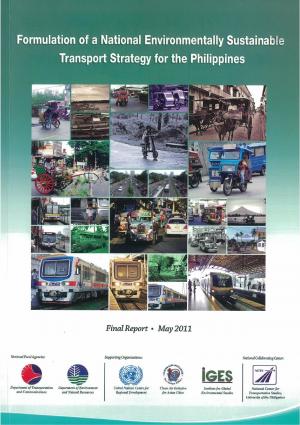Effective Transit Advertising Philippines to Expand Your Audience
Effective Transit Advertising Philippines to Expand Your Audience
Blog Article
Recognizing the Function of Transportation Marketing in Enhancing Brand Name Presence and Customer Involvement
Transportation advertising has become a critical aspect in the marketing landscape, using special opportunities for brands to raise their presence and engage consumers properly. With the ability to get to a captive and diverse target market during their day-to-day commutes, these advertising methods are not just about visibility; they have to do with producing purposeful connections with prospective clients. As we discover the complex advantages and innovative strategies within transportation advertising, it becomes important to consider how these components collectively influence customer perception and habits, increasing concerns about their lasting impact on brand loyalty.
Definition of Transit Advertising
Transportation advertising and marketing describes the method of promoting products, solutions, or brand names through advertisements placed around public transport systems. This type of marketing encompasses a variety of placements, consisting of posters on trains and buses, digital screens at transportation terminals, and wraps on the exterior of cars. It aims to get to a diverse target market, exploiting on the high foot web traffic connected with public transit.
Transit advertising and marketing is purposefully positioned to record the interest of commuters, who frequently spend significant time taking a trip or waiting. By integrating advertisements right into the everyday routines of people, brand names can produce a lasting impact and foster brand acknowledgment. The tool is particularly reliable in metropolitan settings, where public transport is a primary setting of travel.
In addition, transit advertising and marketing can help with local targeting, allowing companies to reach particular demographics based upon transit courses and station places. As city populations expand and the use of public transportation rises, this marketing approach has gained importance as an important part of integrated advertising and marketing techniques. The dynamic nature of transportation advertising, integrated with its capacity to involve consumers in a captive environment, highlights its value in contemporary marketing techniques.
Advantages of Transit Advertising
The effectiveness of transit marketing exists in its ability to deliver a wide range of advantages to brand names looking for to boost presence and engagement. One of the main benefits is the considerable reach it supplies; transit ads can efficiently target diverse demographics across metropolitan areas, reaching both travelers and pedestrians alike. This broad exposure dramatically boosts brand name understanding.
Another advantage is the high regularity of impacts. As transit automobiles follow well-known paths and stop at several places, they develop recurring direct exposure that enhances brand name messages. This frequency fosters familiarity, which is important in consumer decision-making.
Transit advertising is also cost-effective contrasted to various other media systems. Provided its extensive reach and potential for high impressions, brand names commonly experience a reduced price per thousand perceptions (CPM), maximizing their advertising spending plan.
Additionally, transit ads can create a feeling of neighborhood connection. By aligning with neighborhood transit systems, brand names can resonate with local target markets and foster a sense of local satisfaction. This local strategy enhances brand name loyalty and involvement, making transit advertising an engaging choice for services aiming to strengthen their presence on the market.

Reliable Techniques for Transit Campaigns
To maximize the effect of transportation projects, brands need to utilize critical planning and implementation tailored to their target market. Initially, determining the demographic attributes of the audience utilizing public transportation is important. This permits brand names to create tailored messaging that resonates with prospective consumers.
Next, choosing the appropriate transit tools is vital. Whether making use of bus wraps, train posters, or electronic displays, each medium has unique benefits that can improve exposure. As an example, dynamic visuals on bus covers can bring in attention, while digital advertisements can be updated often to mirror prompt promotions.
Furthermore, incorporating a natural branding approach across transit systems makes certain uniformity and strengthens the brand's identity. Making use of appealing layouts and remarkable taglines will strengthen brand name recall amongst travelers.
By employing these strategies, brand names can successfully harness the capacity of transit advertising, cultivating greater recognition and link with their target audience. Eventually, a well-executed transit project can drive considerable growth in brand name presence and customer interaction.

Determining Impact and Involvement
In reviewing the effectiveness of transit marketing campaign, accurate dimension of effect and engagement is crucial for brand names seeking to maximize their advertising techniques. Metrics such as reach, regularity, and perceptions provide fundamental data to analyze exposure. Examining these factors helps why not check here figure out the number of prospective consumers are revealed to the promotions throughout their day-to-day commutes.
Engagement can be additional determined with customer interactions, such as website traffic, social networks mentions, and straight responses to calls-to-action featured in the advertisements. Making use of devices like QR codes or distinct Links can assist in monitoring of consumer behavior straight connected to transportation projects. Studies and responses mechanisms likewise offer as useful techniques to collect qualitative data on consumer perceptions and recall of the promotion.
In addition, progressed analytics and acknowledgment versions can correlate transit direct exposure with subsequent investing in actions, using understandings right into the return on investment. By utilizing a thorough method that integrates quantitative and qualitative measures, brand names can develop a nuanced understanding of their transit advertising effect. Inevitably, this data-driven strategy enables brand names to refine their projects, guaranteeing they resonate successfully with target market and enhance total brand exposure.
Instance Researches of Successful Projects
Effective transportation marketing campaigns function as compelling examples of how reliable strategies can elevate brand name exposure and involvement. Transit Advertising Philippines. One significant instance is the "I Love New york city" campaign, which transformed the city's image and attracted millions of travelers. By utilizing metro advertisements, signboards, and bus covers, the project created a solid, natural brand name identification, resulting in a substantial uptick in tourist and neighborhood business patronage
An additional exemplary campaign is Coca-Cola's "Share a Coke" campaign, which leveraged transportation marketing to customize the brand name experience. By featuring preferred names on advertising products throughout various transit platforms, Coca-Cola promoted a deeper emotional link with consumers, motivating them to share their experiences on social media sites.
Furthermore, the "Got Milk?" campaign properly used public transport ads to get to a broad target market, reinforcing the message of the value of milk in a well balanced diet. The campaign saw a quantifiable increase in milk intake in target demographics.
These study show that when executed thoughtfully, transportation marketing can significantly enhance brand name presence, foster customer involvement, and drive measurable results, demonstrating its important function in contemporary advertising methods. - Transit Advertising Philippines
Conclusion
Finally, transportation advertising works as a vital device for improving brand visibility and cultivating consumer engagement. By utilizing purposefully put anchor ads within mass transit systems, brands can successfully reach varied target markets and enhance acknowledgment via constant direct exposure. The implementation of targeted messaging and ingenious strategies even more intensifies the effect of transportation projects. Inevitably, the ability to gauge engagement and analyze successful case research studies underscores the effectiveness of transit go to these guys advertising in driving brand loyalty and customer interactions.
Transportation advertising has actually emerged as an essential element in the advertising and marketing landscape, using one-of-a-kind chances for brands to boost their visibility and involve consumers effectively.Furthermore, transit advertising and marketing can promote localized targeting, enabling services to get to certain demographics based on transportation routes and station places.In assessing the performance of transit marketing campaigns, exact measurement of impact and involvement is crucial for brand names looking for to optimize their advertising and marketing strategies.Effective transportation advertising projects serve as engaging examples of how reliable strategies can boost brand visibility and involvement.In conclusion, transit advertising and marketing serves as a vital device for enhancing brand name presence and promoting customer interaction.
Report this page